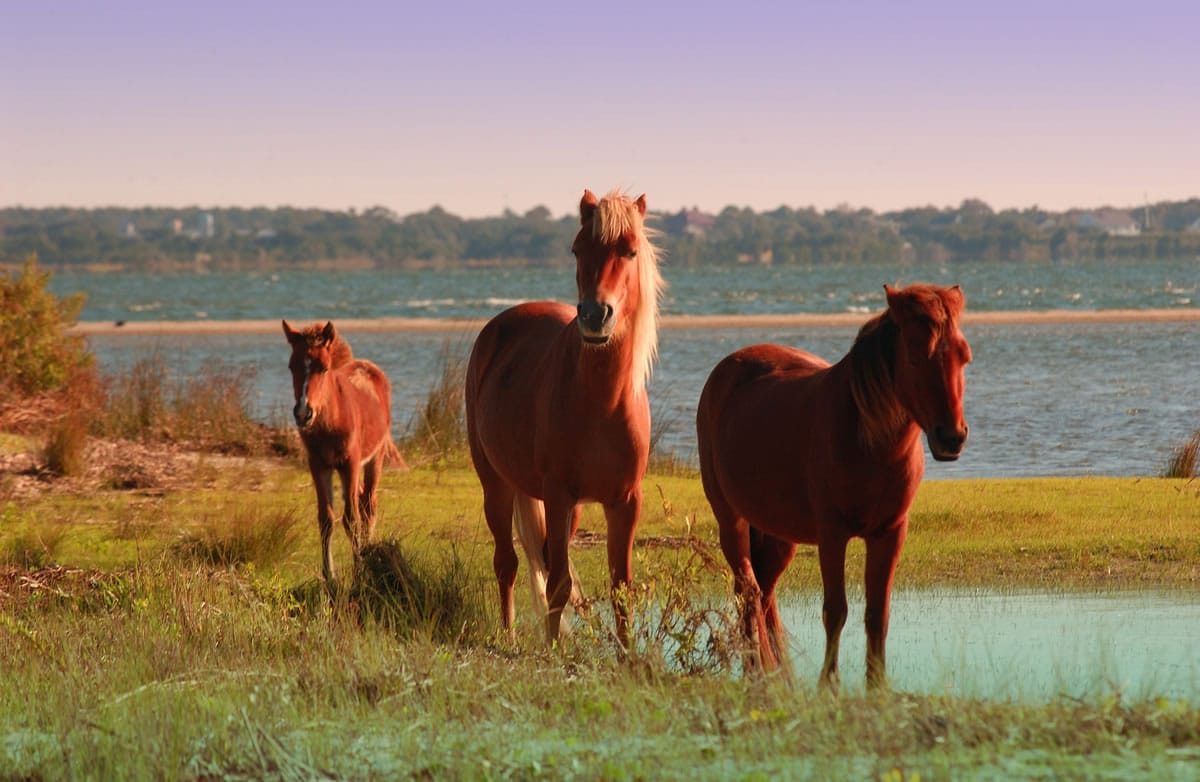RALEIGH, N.C. — Beach communities and environmentalists are pushing back against a proposal to give the National Park Service the option of using dredging material to fight erosion on North Carolina’s pristine Shackleford Banks, where wild horses roam and no humans live.
The proposal, part what’s called a 20-year Dredge Material Management Plan, has created an odd coalition of towns that want the material from Beaufort Inlet to go to their beaches, not the Shackleford Banks, and environmentalists, including the well-known Orrin Pilkey, who want to protect Shackleford Banks from more human interference.
The park service manages Shackleford Banks, the southern-most barrier island in Cape Lookout National Seashore, as a wilderness area, although it hasn’t been so designated by Congress.
The erosion at Shackleford Banks is both a part of the natural expansion and contraction of inlets and a natural reaction to sea level rise, said Pilkey, a geology professor emeritus at Duke University. And in the past, the park service has stuck to its guns about letting nature take its course, he said.
“I oppose it because I’m so strongly in favor of the park service’s ‘let nature rip’ policy,” he said. “And what I fear, and what others like myself fear, is that the park service is starting to waffle a little bit on this. I understand why. They’re always under pressure to do something (about erosion).”
It’s natural for inlets to expand and contract over time, he said, and Beaufort Inlet is expanding right now. “Shackleford Banks is doing what nature intended it to do,” he said.
More than 100 horses roam Shackleford Banks, but humans haven’t lived there since the turn of the 20th century, plenty of time for evidence of their presence to disappear. Visitors can walk its nine miles of deserted beach seeing maritime forests but no roads or homes. It’s that sort of pristine environment that people such as Pilkey fear will be lost if the Corps is allowed to pipe in sand.
The sand that some view as an unwanted interloper on Shackleford is a valuable commodity for places such as Atlantic Beach, where the mayor says it protects about $2 billion in oceanfront investment from storms.
But the plan only gives the park service the option of using the dredge material at Shackleford Banks; it doesn’t require it to do so, said Pat Kenney, superintendent of the Cape Lookout National Seashore. “If we say no to sand now, in the next 20 years, we would not be considered for sand,” Kenney said. “One of the critical things the park service is trying to do is protect the option to accept sand.”
That’s a new stance for the park service, which the plan says asked the Corps to include dumping of dredged material on Shackleford Banks in 2010 after refusing the sand in the past because it wasn’t considered consistent with NPS management policies.
The National Park Service has never used dredge sand on a wilderness area or one that’s proposed for a wilderness designation, such as Shackleford, an NPS spokesman said. It has no proposals to use dredge sand in any such areas other than Shackleford, the spokesman said.
The Corps has dumped sand at other national parks, while working with other federal or state entities. That includes placing sand on the sound side shore of the Cape Lookout Lighthouse in 2006 to protect historic structures and in 2003, at the Cape Hatteras National Seashore, to fill a breach caused by Hurricane Isabel. It intends to have a final plan for Beaufort Inlet sand by spring of 2015.



